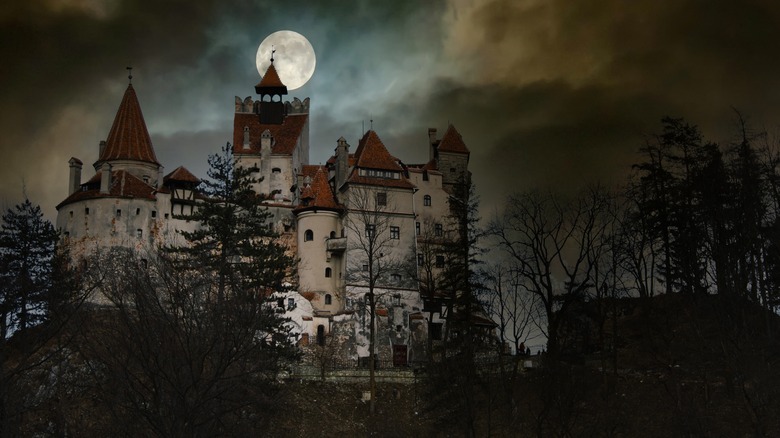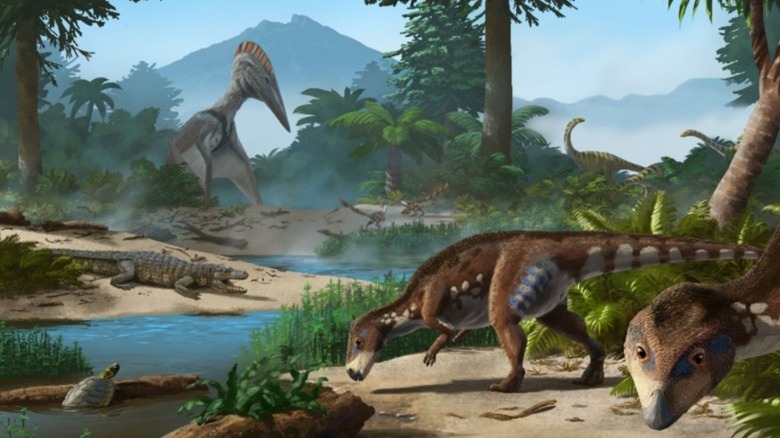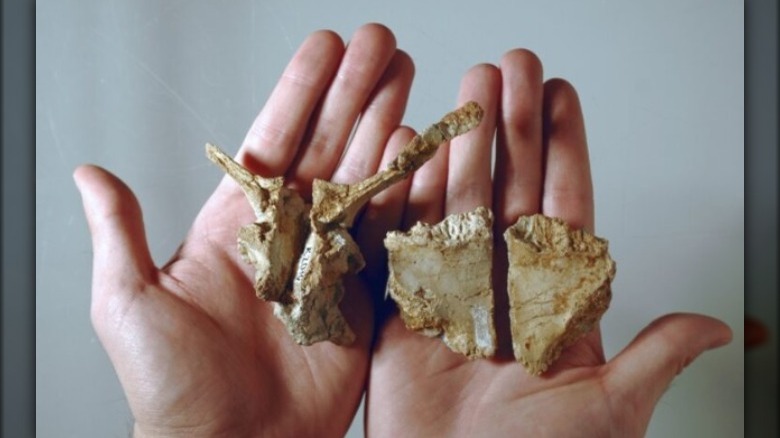Transylvania Was The Home Of Dracula And Also A Unique Reptile
Transylvania is a beautiful part of the world. Per Britannica, it's a mountainous region of Romania, home to the Transylvanian Alps and a section of the Carpathian Mountains (which, the outlet goes on, runs through other European nations such as Ukraine too).
Transylvania, then, is a rugged, remarkable region, and it has a suitably fraught history. BBC Travel reports that, in the 12th century, Saxons arrived in Transylvania. Géza II, the Hungarian king himself, faced threats from outside, and the industrious Saxons made their own settlements here in the hope that they could bring stability to the region. Per World Atlas, great powers such as the Roman and Ottoman Empires vied for control of Transylvania both before and after the Saxons settled, giving it a rather blood-soaked history.
Naturally, no figure quite defines Transylvania's blood-soaked past like Count Dracula, the literary and pop culture icon who supposedly had both a castle there and a penchant for decidedly melodramatic and unnecessary cape-wearing. According to National Geographic, a significant part of the influence for Count Dracula came from one Vlad III Draculea. This 15th-century leader of Walachia (part of modern-day Romania) has come to be known as Vlad the Impaler. Needless to say, this nickname doesn't stem from a reputation for being gentle and merciful to those who opposed him.
But a curious reptile was recently discovered in Transylvania that was very, very real, and could become a new figure that defines the region.
From Vlad the Impaler to Count Dracula
All That's Interesting claims that Vlad was the orchestrator of 80,000 deaths, and the stories of his feasts among dead and dying impaled victims (which only increase his notoriety, whether there's truth to them or not) are well known. Employing the most brutal tactics in repelling an invasion from the Ottoman Empire, the dreaded Impaler's exploits reportedly came to light in "An Account Of The Principalities Of Wallachia And Moldavia: With Various Political Observations Relating To Them," written by William Wilkinson. It was this particular tome, the outlet reports, that Bram Stoker read, and which may very well have brought up a few choice ghastly traits that found their way into the fictional vampire. In this way, Vlad Dracula ("Son of the Dragon," per All That's Interesting) has come to be forever associated with Count Dracula in popular culture.
In November 2022, it seems, a brand-new reptile species discovered in Transylvania was described. The significant discovery is sure to make it another of the region's most famous denizens. Felix J. Augustin et al. shared the details in their paper "A new ornithopod dinosaur, Transylvanosaurus platycephalus gen. et sp. nov. (Dinosauria: Ornithischia), from the Upper Cretaceous of the Haţeg Basin, Romania," which was published in the Journal of Vertebrate Paleontology in November 2022.
The secrets of Transylvanosaurus platycephalus
"The holotype specimen represents one of the most complete clearly associated rhabdodontid skulls from the Haţeg Basin known so far," the study reported of the 2007 discovery. There was something very important about this skull, though. Per CNN, the species boasted a "remarkably flat head" and was a small herbivore. Measuring about 6 feet long, the outlet reports, it lived in a region that was a group of islands during the Cretaceous period.
Dinosaur biology can be a very tricky business indeed, as these creatures' dimensions, behaviors, and very habitats were so unlike almost anything we're familiar with today. It's incredibly useful, then, when they do deign to adhere to the theories and conclusions of today. Transylvanosaurus platycephalus' relatively small stature makes sense for its island home. In Proceedings Of The Royal Society B, Shai Meiri et al.'s paper "The island rule: made to be broken?" describes the titular "rule" as "a hypothesis whereby small mammals evolve larger size on islands while large insular mammals dwarf."
This new creature was no mammal, but it's such an intriguing specimen because it seems to fit with this concept. It is also evidence that there was a greater variety of species in the region at the time than has been assumed. Further fascinating discoveries, then, will surely follow this one.


